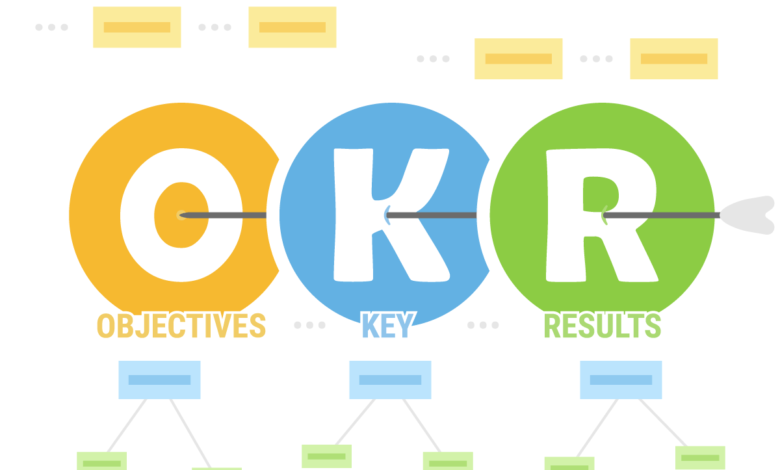A Business Leader’s Guide To Implementing An OKR

An OKR can be a highly effective leadership tool for a team of any size. They will help drive direction, alignment, commitment, and a result-oriented culture in an organization if done correctly. However, OKRs are often applied wrongly, resulting in the inability to recognize the promised benefits.
Writing Effective Objectives And Key Results

Begin by describing each of your goals. A goal describes what you intend to do with a specific project. Great targets are important, concrete, achievable, actionable, and inspiring.
Objectives examples:
- Twitter should add an edit button.
- Facebook’s profile page should be redesigned.
- At Google, we’re working on making the best web browser in the world.
- On Amazon, roll out a redesigned signup flow that needs fewer moves.
Then, for each goal, you determine one or more main outcomes. The main result is a numerically dependent expression of advancement toward a goal’s achievement. Relevant, time-bound, observable, and verifiable main findings are ideal. This company will help your business achieve these goals.
Examples of important outcomes:
- Increase the number of daily users every week by 20%.
- Enable 20 million apps
- By July 31, you should be able to use the new feature.
- Conduct 50 interviews with consumers
Measure results rather than outputs

Instead of merely calculating one’s job performance, the most important primary findings calculate practical customer or market outcomes.
For example, “publish 42 blog posts” is a useful key result, but you’d also want to pair it with a key development that speaks to the outcome you hope to drive from publishing these blog posts. “Get 1000 new customers,” “get 10K monthly page views,” or “get 500 referral signups,” for example.
The explanation for this is that as you review your Objectives and Key Results at the end of the year, you’ll be able to reflect on not only whether you achieved the results you desired (42 blog posts) but also whether that success yielded the desired outcome.
If it doesn’t, you can have a constructive conversation about how to increase the product’s consistency in the future to achieve improved results, or you can determine if this project is worthwhile for performing the specified targets. This form of contemplation that occurs during OKR reviews helps calibrate which interventions ultimately bring you closer to the target results and thus aids in the growth of your team’s product instincts.
There are a plethora of outcome-oriented primary outcomes to pick from. It is preferable to use more precise steps associated with a specific program. E.g., if you want to minimize the amount of frustration related to a certain user flow, a decrease in the number of help tickets issued on that subject could be a good place to start.
Quarterly Objectives and Key Results (OKRs)

Annual OKRs are inadequate and based on what you learn from customers and the market; you may want to adjust them more often. It also lowers the learning curve since OKR evaluations are only completed once a year.
Implementing an OKR program, on the other hand, adds overhead. And spending the tax every month is always unnecessary and ineffective because you are seldom going quickly enough to see the achievement of outcome-oriented primary outcomes in that timeline.
3-5 Objectives and Key Results (OKRs)

No more than 3-5 Objectives and Key Results are recommended for any team within an organization. The opportunity to focus on a team is one of the strengths of OKRs. This is only possible if you can make tough decisions on which OKRs to add and leave out. They represent the top 3-5 most important programs to complete.
Draft Reviews

Objectives and Key Results’ ability to accelerate alignment, especially across collaborating cross-functional teams, is one of their most valuable advantages. However, synchronization must be built into the mechanism to accomplish this advantage.
The best way to do this is to publish draft Objectives and Key Results and then allow one week for review and feedback. During this review period, every team needs to verify that any dependencies they have on other teams are reflected as priorities in those team’s OKRs.
Ensure the product development team has an OKR to assist with the product team launch and has an OKR to launch a feature this quarter. If the design team is working on a new product standard, you’ll want to make sure the UX testing team has an OKR to meet the user analysis criteria.
Consistent Scoring Guidance

You must establish a single consistent scoring guideline across the entire team so that anyone can reliably score them and so the definitions are consistent and clear.
Here are some scoring guidelines based on achieving each OKR’s key results in the company:
- Green indicates that a goal has been met 100 percent of the time.
- Achieved a score of 70 percent or better in purple.
- 70 percent reached in red
The basic scoring criteria are less important than maintaining continuity around the organization. The guidelines can be modified to work best for the way key results have been defined for this company.
Expectation Setting

It’s crucial to create consistent goals for the whole team from the outset.
Aspirationally, we should set our eyes on what we want to accomplish. As a result, I consider it an absolute victory if all of our OKRs are yellow in a given quarter since that means we met 70% of our optimistic objectives for all goals. In reality, if anything is green, I will tell the team that our goals are too modest.
It’s also important to emphasize that OKR results have little bearing on performance evaluations or promotions. Although they are indeed an input, they are often influenced by a variety of other influences.
The explanation for this is that if people believe their OKR success will impact their own performance, they will sandbag the main outcomes to ensure they still achieve them, preventing you from setting optimistic goals.
This Company’s Personal OKRs

Setting team Objectives and Key Results is appropriate for several teams. A marketing squad, for example, might have a collection of OKRs. The R&D team can have a group of OKRs that extend to the whole organization, but they still apply to individuals.
In this case, each person would have their own collection in addition to the teams. Their OKRs are likely to include a portion of the team objectives and key results on which they are directly responsible and a few personal OKRs that aren’t included in the team’s OKRs. This may consist of programs they’re working on that didn’t make it into a top 3-5 team OKR.
Overcoming the Downsides of OKRs

Although OKRs are an important tool, they do have certain pitfalls that must be identified and discussed.
There are many aspects of the customer interface, the company, and the difficult industry to quantify and thus are not optimized. Sometimes you can get creative with your key result measures to develop better ones that get at some of these less tangible aspects of this business.
Another drawback is that they focus explicitly on the outcomes that you are looking to achieve yet pay no attention to the process for achieving those outcomes. We need to supplement OKRs with additional tools more focused on improving the quality of our work.



